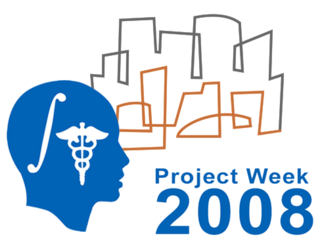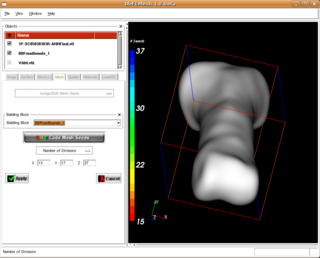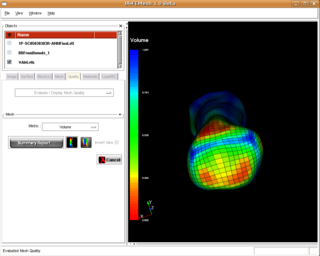Difference between revisions of "NA-MIC/Projects/External Collaboration/Mesh Generation Summer 2008"
| Line 30: | Line 30: | ||
Work during the project week will continue much of the work that we have undertaken over the past year. Several integration projects will be tackled. | Work during the project week will continue much of the work that we have undertaken over the past year. Several integration projects will be tackled. | ||
#Update existing voxel meshing execution model code. Bring it up to date with the changes that have taken place over the past six months with the base meshing code. Support now exists within Slicer3 for handling of unstructured grids and this should be propagated into this module. | #Update existing voxel meshing execution model code. Bring it up to date with the changes that have taken place over the past six months with the base meshing code. Support now exists within Slicer3 for handling of unstructured grids and this should be propagated into this module. | ||
| − | #Work with Steve and Curt on changes to the meshing workflow. | + | #*Work with Steve and Curt on changes to the meshing workflow. |
| − | #Work with Curt on unifying stand-alone and Slicer3 meshing code base. | + | #*Work with Curt on unifying stand-alone and Slicer3 meshing code base. |
| − | #Discuss some issues with KWWidgets developers: | + | #*Discuss some issues with KWWidgets developers: Multi-column list box scrolling issues, |
| − | + | and Notebook widget and potential for constant size tabs and scrolling tabs | |
| − | |||
</div> | </div> | ||
Revision as of 14:46, 19 June 2008
Home < NA-MIC < Projects < External Collaboration < Mesh Generation Summer 2008 Return to Project Week Main Page |
Key Investigators
- Iowa: Nicole Grosland, Kiran Shivanna, Vincent Magnotta
- Isomics: Steve Piper
- Knowledge Vis: Curt Lisle
Objective
We are developing methods generation of finite element meshes. This includes both semi-automated techniques using building blocks that can be manipulated with a number of new VTK widgets, and fully automated mapped meshing techniques. Our group is focused around the application of these tools to study orthopaedic biomechanics, but there are several other potential applications.
Approach, Plan
Work during the project week will continue much of the work that we have undertaken over the past year. Several integration projects will be tackled.
- Update existing voxel meshing execution model code. Bring it up to date with the changes that have taken place over the past six months with the base meshing code. Support now exists within Slicer3 for handling of unstructured grids and this should be propagated into this module.
- Work with Steve and Curt on changes to the meshing workflow.
- Work with Curt on unifying stand-alone and Slicer3 meshing code base.
- Discuss some issues with KWWidgets developers: Multi-column list box scrolling issues,
and Notebook widget and potential for constant size tabs and scrolling tabs
Progress
References
- Grosland NM, Brown TD. A voxel-based formulation for contact finite element analysis. Comput Methods Biomech Biomed Engin. 5(1):21-32, 2002.
- Grosland NM, Bafna R, Magnotta VA. Automated Hexahedral Meshing of Anatomical structures using Deformable Registration. Computer Methods in Biomechanics and Biomedical Engineering. Accepted.
- Grosland NM, Shivanna KH, Magnotta VM, Kallemeyn NA, DeVries NA, Tadepalli SC. IA-FEMesh: An open-source, interactive, multiblock approach to musculoskeletal finite element model development. Submitted.
Description
The Musculoskeletal Imaging, Modeling, and EXperimentation (MIMX) Program is a collaborative effort directed at computational modeling of anatomic structures. A primary objective is to automate the development of patient-/subject- specific models using a combination of imaging and modeling techniques, with particular emphasis on finite element modeling.
Publications
Links
Project Week Results: Winter 2008, June 2007

